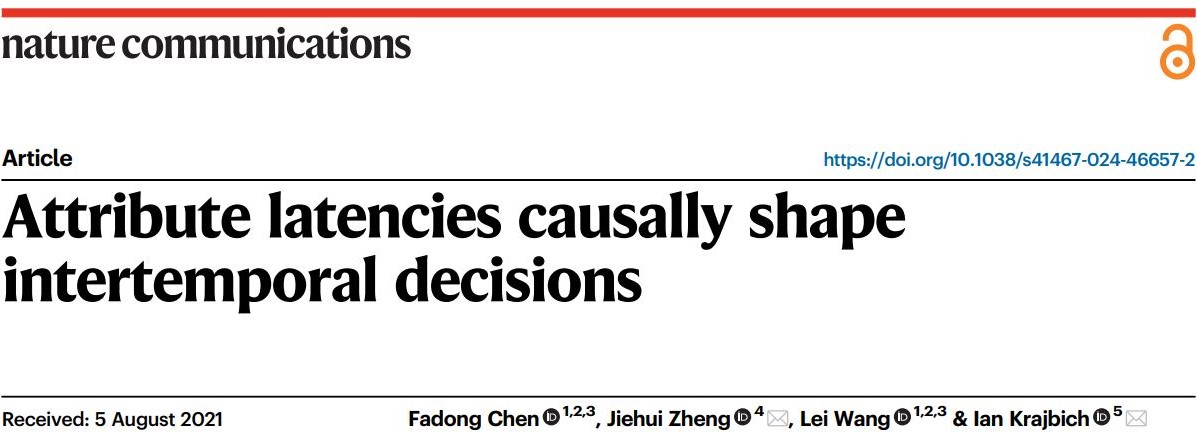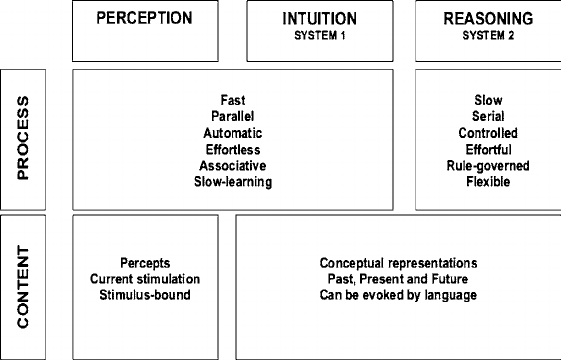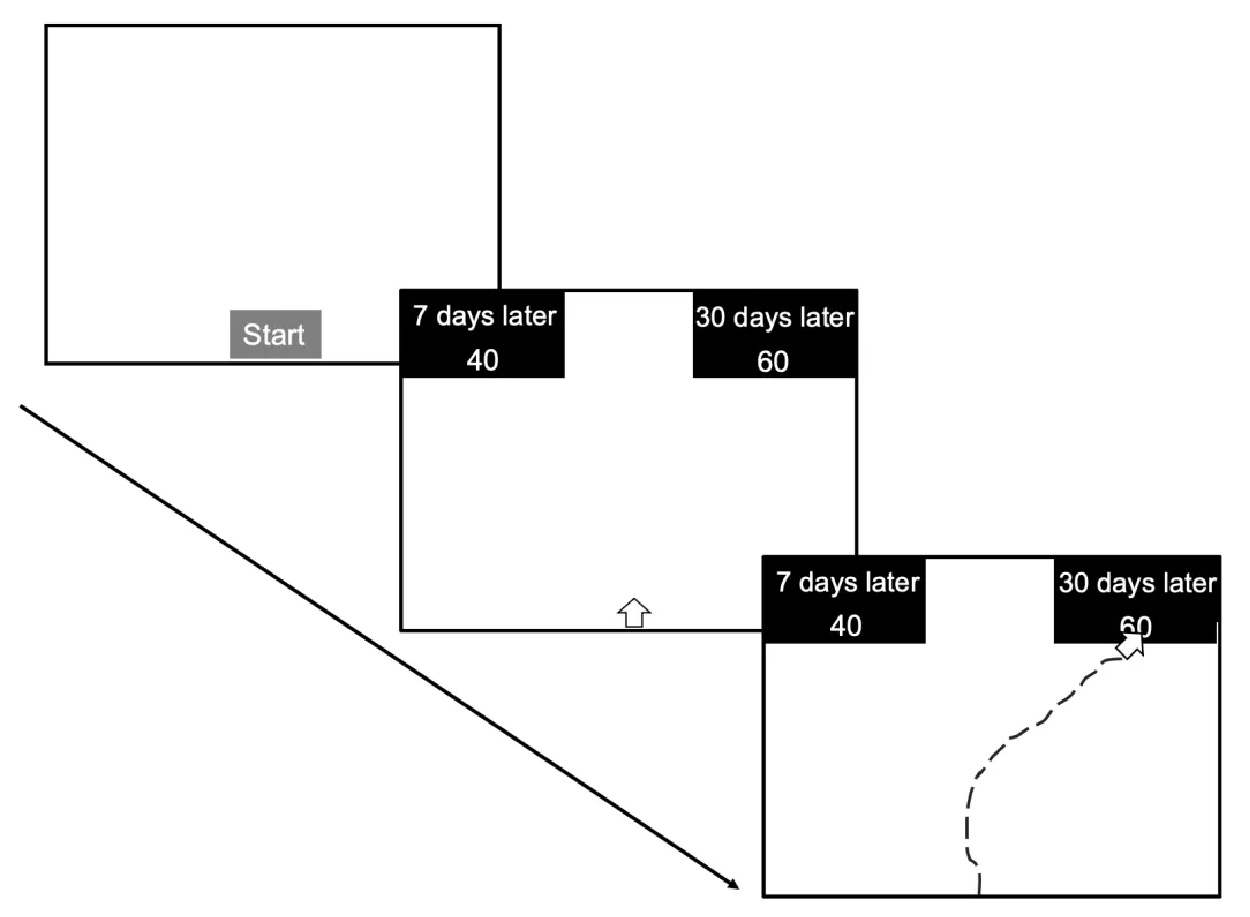In everyday life, we are often faced with various decisions. For example, should you buy a desired item immediately or save the money and buy something supposedly better later? Is it wiser to invest in high-priced items with low energy consumption or to opt for cheaper products with higher energy consumption?
Both individuals and organizations, including the policy makers who monitor and regulate the situation, must constantly weigh the merits of the available options, and make decisions accordingly, dealing with these "intertemporal choices".
It has been observed that companies and organizations around the world are adopting "thinking time" as a solution to combat decision-making difficulties in order to help their employees and subordinates streamline their decisions. But does it always work?

Click here to access the journal article
Recently, CHEN Fadong and WANG Lei from the Department of Data Science and Management Engineering at Zhejiang University School of Management (ZJUSOM), together with their collaborators ZHENG Jiehui, Ian Krajbich and others, conducted a systematic study on intertemporal decision making. Their research findings "Attribute latencies causally shape intertemporal decisions" were published online in Nature Communications at the beginning of April.
|
CHEN Fadong | 陈发动 School of Management, Zhejiang University |
||
|
|
||
|
|
|
Academic Background: Permanent Associate Professor and Doctoral Supervisor in the Department of Data Science and Management Engineering, School of Management, Zhejiang University Research directions: Behavior-based decision making, behavior-based operations management, behavior-based and experimental economics You can learn more about Prof. CHEN Fadong’s academic background here |
|
WANG Lei | 汪蕾 School of Management, Zhejiang University |
||
|
|
||
|
|
|
Academic Background: Professor and PhD supervisor at the Department of Data Science and Management Engineering, School of Management, Zhejiang University Research directions: Intelligent management decision making by brain and computer You can learn more about Prof. CHEN Fadong’s academic background here |
|
Is additional "thinking time" and "cool-off time" helpful? |
The seemingly simple "intertemporal decision making", i.e. weighing the merits of options at different points in time and then making judgments and choices, not only reflects a person’s capacity for self-control, deferral of rewards and degree of patience, but also affects a person’s health, wealth and happiness.
Given this importance, economic managers are also trying to apply various methods to help people make more rational choices when making intertemporal choices. In response to the irrational consumption of a large number of users and the resulting financial and social problems, Ant Group’s consumer credit product "Jiebei" planned to introduce a "7-day credit cooling-off period" back in 2021, allowing users to repent their first loan within 7 days. Although this plan was overwhelmingly supported by 89% of users, it has not yet been implemented in "Jiebei".
The "failure" of this plan has made CHEN’s team aware that in economics, static models based on utility theory are usually used to describe and explain people’s "intertemporal decision-making” behavior, but this kind of model does not provide effective support for the "cooling-off period" or “time-to-think” strategy.

|
Properties of System 1 and System 2 (Kahneman, 2002). The Rationality Debate: Application of Cognitive Psychology to Mathematics Education - Scientific Figure on ResearchGate. |
The original "cooling-off period" strategy was based on the dual cognitive processing theory of Kahneman, the Nobel laureate in economics. This theory assumes that there are two systems in the human brain, the intuitive system (System I) and the deliberative system (System II). System I is more impulsive, less patient and tends to favor immediate options, while System II is calmer, more patient and prefers longer-term but higher-yield options. Human intertemporal decision-making behavior is the result of the interaction between two systems in the brain.
This conclusion has been widely accepted in management, economics, psychology and other fields. But is this really the case? Does a “cooling-off period” work for everyone? Is there anything more effective than a cooling-off period? The research team has investigated this topic, which is of importance to academia and industry, in depth.
|
“ |
|
|
Experiments have shown that the "cooling off phase" is more effective for impulsive people, but has a negative effect on calm people, and that individual’s patience can be "manipulated". |
To find out whether the "cooling off phase" is effective, CHEN’s team believes it is necessary to further investigate and understand the cognitive processing mechanism underlying intertemporal decision-making behavior so that managers can develop better intervention strategies to address the problem. "Targeted treatment" of irrational behavior in intertemporal decisions.
In this study, the team conducted five experiments on intertemporal decision making. In each experimental task, subjects had to choose between two options with different benefits. One option has "smaller and sooner" (SS) benefits and the other option has "larger but later" (LL) benefits.
|
Experiment 01 | Intertemporal choice behavior of different people during the “cooling-off phase” |
In this experiment, the research team intervened in the subjects’ decision-making time and recorded the choices made by the subjects under conditions of time freedom, time pressure and time delay (with a "cool-down phase") as well as their reactions.

Figure 1 | Experiment 1
Through this experiment, CHEN’s team found that an intervention in decision making (i.e. a cooling-off period) can have completely different effects on the intertemporal choice behavior of different people.
Impatient, more impulsive individuals become more impulsive under time pressure and more patient when not time limitations were applied. For those who are more patient initially, the delay in time "wore down" their patience. This shows that the strategy of "cooling down" is effective with impulsive people, but has the opposite effect with initially calmer individuals.
Through further research, CHEN’s team has more precisely deciphered the cognitive processing mechanism behind intertemporal decision-making behavior. They found that behind intertemporal choice behavior is a "process of accumulating evidence for comparison between attributes with attribute latency".

|
Figure 2 | Inter-attribute comparison evidence accumulation and processing process with “Attribute latency” |
In experiments, the research team found that the more patient people are, the earlier they start processing the attribute "money" and the later they start processing the attribute "time"; the less patient a person is, the earlier they start processing the attribute "time" in their minds, the later they process the attribute "money". The difference in the start time for processing these two attributes is defined as "attribute latency", which is also an important cognitive component for intertemporal decision-making behavior.
“Attribute latency" can explain individual differences in patience and decision time and can also reflect how an individual’s patience changes under time pressure and in the presence of a "cooling-off period".

|
Image source: 千库网 |
More importantly, experiments have shown that "attribute latency" exhibits a certain degree of “volatility" from individual to individual. Therefore, the research team further hypothesized whether it is possible to manipulate "attribute latency" to make people more or less patient. To further uncover the causal path from "attribute latency" to decision-making behavior, CHEN developed four follow-up experiments with nudge interventions.
|
Influence the individual’s patience by adjusting the way information is presented to them |
In the subsequent experiments, the research team used the "boost" idea proposed by Nobel Prize winner Thaler as the main experimental idea. This means that it only changes the decision structure without forcing people to make a decision.
In further experiments, the order in which the two attributes "money" and "time" were presented was changed. This was intended to ensure that people’s brains process the two attributes "money" and "time" separately, which has an effect on the "attribute latency".

|
Image source: 千库网 |
The experimental results show that people become more patient when they process the attribute "money" first, while people become less patient when they process the attribute "time" first.
This result confirms the assumption of CHEN’s team. Changing the order in which attribute information is presented can almost "control" people’s patience when making choices during the "cooling off" period."
|
“ |
|
|
Deconstructing the cognitive processing mechanisms of the brain that underlie individual’s decision-making behavior provides new ideas for promoting intertemporal decision-making. |
|
Results |
Previous research has tended to look at what kind of decisions people make after thinking, but research into the thinking process in the brain that underlies decision making - still has much explore.
CHEN’s team has expanded our understanding by exploring the brain’s thought process in decision making, particularly in the context of intertemporal choices. Their work has illuminated the cognitive mechanisms behind such decisions and how the brain processes information with different properties, providing insights into the microcognitive underpinnings of long-term decision making. The practical side of the research is to show ways to promote more rational decision-making in real life. It emphasizes the concept of "nudging" — subtly guiding individuals to make more rational choices without restricting their freedom. The findings are particularly relevant in the digital age, where the presentation of online information significantly influences decisions, and offer valuable insights for managers and professionals in the field.
|
- We thank Prof. CHEN Fadong and his team for expanding our understanding the thought process involved in making decisions. Hopefully we will soon learn to apply these insights in real-life scenarios and make better quality-conscious decisions.
- You can read the original article in Chinese here